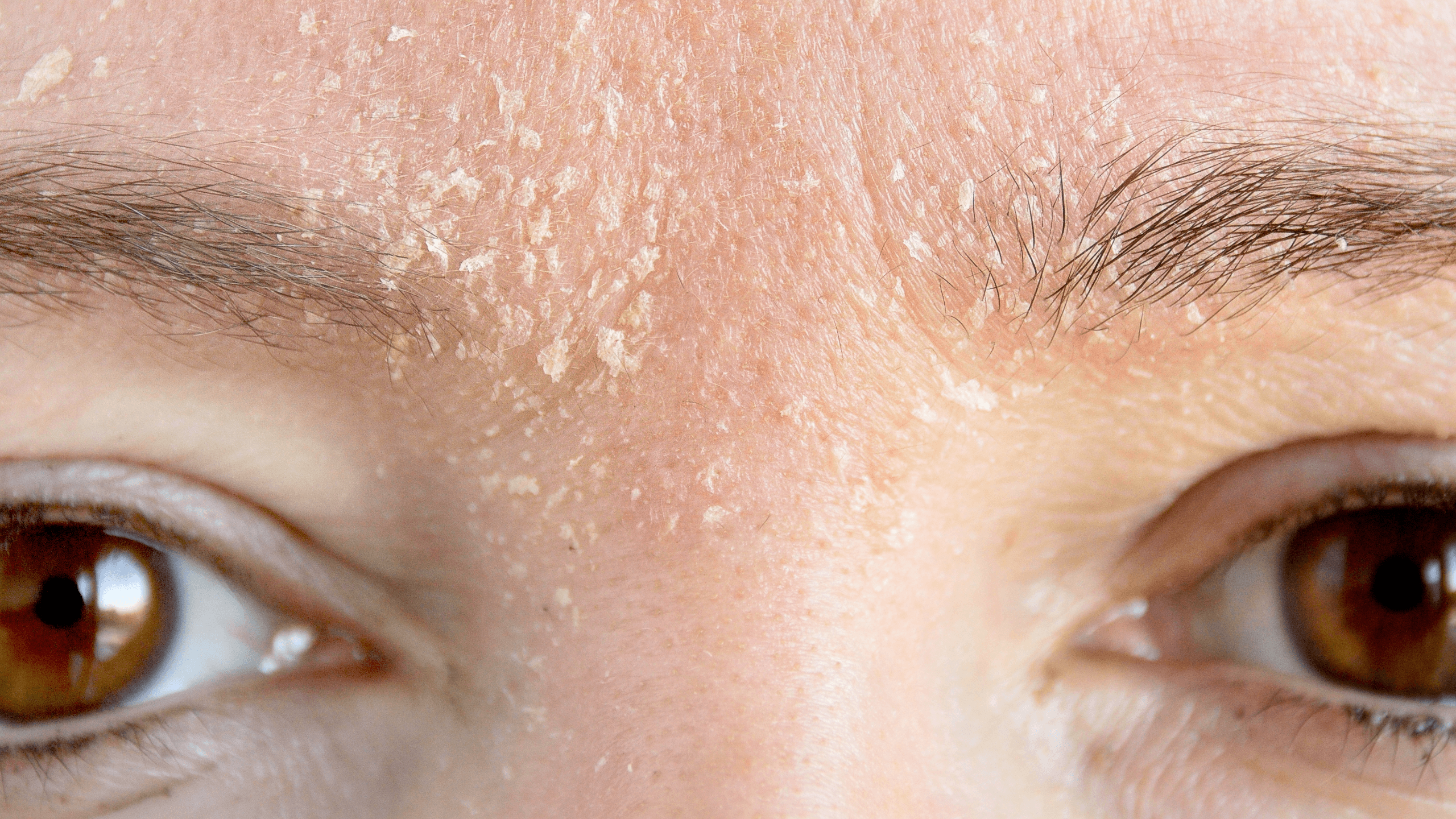Your skin acts as your body’s first line of defense, protecting you from viruses, bacteria, and other invaders. People with eczema- or rosacea-prone skin, however, tend to have a weakened skin barrier. This leaves your body susceptible to environmental threats.
We want to help you better understand the role your skin barrier plays in inflammatory skin conditions. Repairing the skin barrier is key to long-term skin health.
What Is a Skin Barrier?
Your skin barrier is the outermost layer of skin. It’s called the stratum corneum and is composed of skin cells known as corneocytes. The corneocytes are held together by a thin lipid layer made up of fatty acids, cholesterol, and ceramides.
The composition of the skin barrier is often compared to a brick wall where the cells act as bricks, and the lipid layer functions as mortar.
This brick wall functions to protect your body from environmental toxins, airborne threats, chemicals, viruses, and bacteria that could harm you.
In short, the skin barrier helps to not only keep your skin healthy — but your whole body.
Skin Barrier for Rosacea-Prone Skin
Rosacea is a complex inflammatory skin condition that causes redness and visible blood vessels on the face, most often across the nose and cheeks. There’s no single cause of rosacea—multiple underlying factors, including a damaged skin barrier, can contribute to symptoms.
Rosacea is highly triggered by environmental factors, including hot and cold temperatures and sun exposure. Improving skin barrier function can help defend your skin from the surrounding environment and reduce rosacea symptoms.
When your body isn’t working to fight off foreign invaders and environmental threats, your immune system doesn’t have to work so hard and inflammation levels decrease. Reduced inflammation can equal reduced rosacea symptoms.
Skin Barrier for Eczema-Prone Skin
Like rosacea, eczema is an inflammatory skin condition. It causes dry, itchy, and scaly patches of skin that may appear and disappear repeatedly over long periods of time. In people with eczema, that skin barrier doesn’t function effectively.
Researchers have found that some people with eczema have a mutation of the gene that creates filaggrin, the protein that forms the top protective layer of skin. When you don’t have sufficient filaggrin, the skin loses moisture and gaps form between skin cells. This can cause a leaky skin barrier.
When you lose moisture in the skin, your skin becomes dry, which worsens eczema symptoms. A weakened skin barrier also leaves you more susceptible to irritants, which can worsen eczema symptoms. Improving the strength of the skin barrier is a key component of eczema management.
How to Tell If Your Skin Barrier Is Damaged
When your skin barrier is damaged and not functioning effectively, you may develop any of the following symptoms:
- Stinging, itching, and other irritation
- Discoloration of the skin
- Increased sensitivity
- Rough patches
- Blemishes
- Facial flushing/redness
- Itchy skin
- Dry skin
- Skin infections
What Damages Your Skin Barrier
Your skin barrier faces numerous threats that can leave it damaged. Certain factors that play a role in weakening your stratum corneum include:
- Drying and stripping skincare products
- Over-cleansing and over-exfoliating
- Overexposure to UV rays
- Climates that are either too humid or too dry
- Contact with allergens
- Genetics
How to Restore Your Skin Barrier
Repairing a compromised skin barrier requires TLC. Take these steps to strengthen your stratum corneum:
Be Aware of Your Skin’s PH
The ideal range for your skin pH is 4.7–5. When your skin pH is elevated, the skin barrier doesn’t function as well, leaving the body susceptible to an overgrowth of harmful bacteria, transepidermal water loss, and skin conditions such as rosacea and eczema.
Many soaps on the market today can throw off your skin’s pH. Other factors that can negatively impact the acidity of the skin include overexposure to the sun, over-exfoliating, and long, hot showers.
By being mindful of your skin’s pH balance, you can protect your skin’s barrier.
Use a Moisturizer with Ceramides
The stratum corneum contains high levels of ceramides, which are waxy lipids. They play a critical role in the strength of your skin barrier. Research shows that using a moisturizer that contains ceramides may help strengthen a weakened skin barrier and provide much-needed moisture to compromised skin.
Balance Your Skin Microbiome
Trillions of microorganisms live on the surface of the skin. When the good bacteria on your skin are thriving, they can crowd out any potentially harmful bacteria that try to overgrow and cause trouble.
When the balance of good to bad bacteria gets out of whack, your body isn’t able to properly defend itself. Bad bacteria can overgrow, drive inflammation, and cause your skin to flare.
Rebalancing your skin microbiome can be as easy as applying daily cream. Gladskin Eczema Cream and Gladskin Redness Relief Cream both contain our patented protein Micreobalance® and restore bacterial balance to the skin microbiome while moisturizing. 
Choose Gentle Topical Products
Drying and stripping skincare products can lead to a weakened skin barrier. By switching out these harsh products for gentler alternatives, you can help maintain the integrity of your skin barrier. Harsh products can include those containing acids, fragrances, soaps, sulfates, and parabens.
Looking for gentle options? Try Gladskin's Body Wash, Face Wash and Makeup Remover.
How Long Does It Take To Repair the Skin Barrier?
The length of time required to repair the skin barrier depends on the overall health of the skin and the extent of skin barrier damage. For people who don’t have inflammatory skin conditions, it’s possible to repair the skin barrier in two to four weeks with intense care.
For people with conditions such as rosacea and eczema, repairing and caring for the skin barrier may be an ongoing process that requires consistent maintenance.
Bolster a Healthy Skin Barrier Today
Reversing skin barrier damage requires patience. But don’t fret. With time, consistent care, and gentle products, a broken skin barrier can be repaired.
